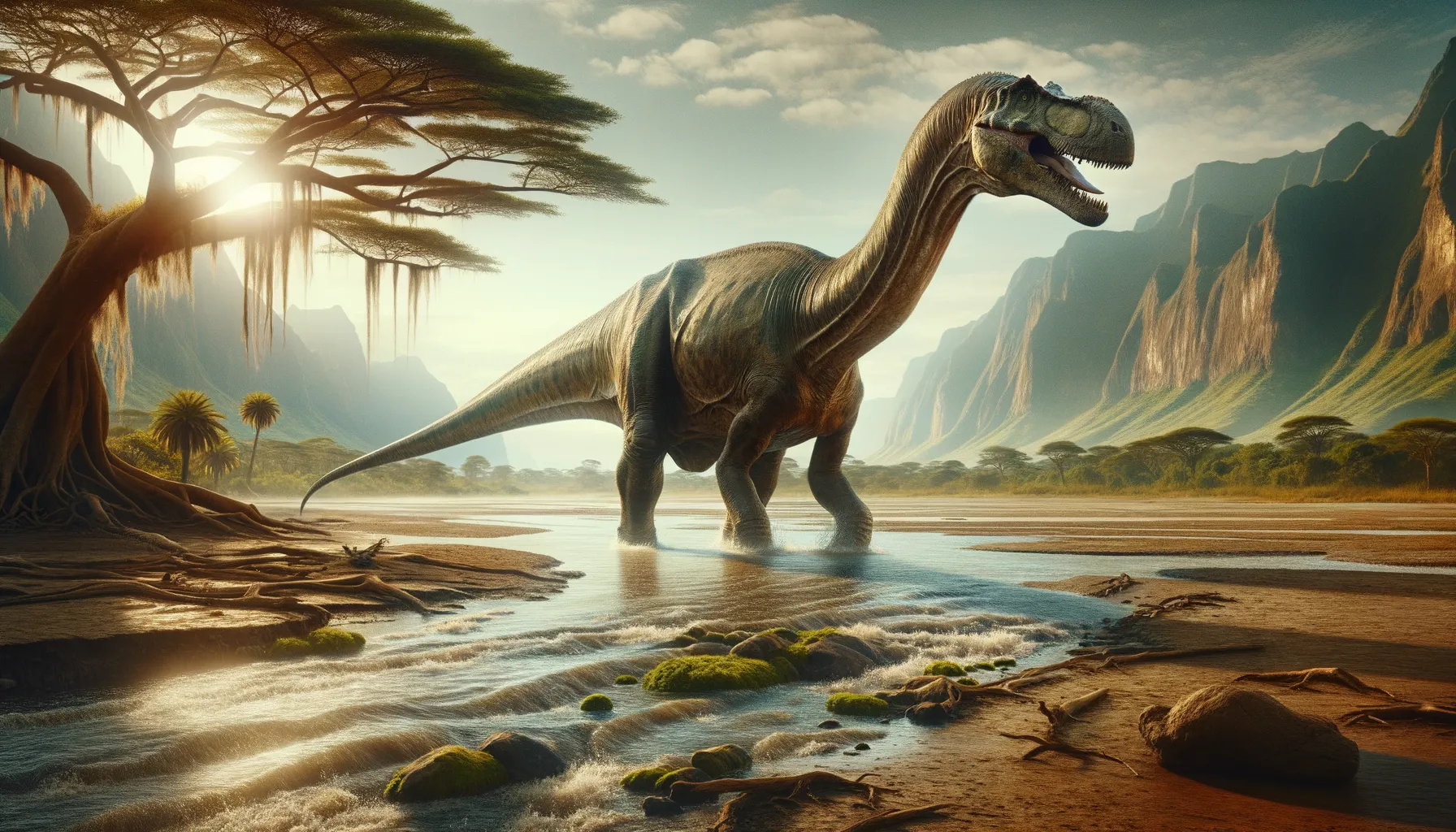
Mnyamawamtuka
A giant from ancient riverbanks!
Period
Cretaceous
Length
Measured approximately 26 feet from head to tail.
Height
Could reach around 10 feet at the shoulder.
Weight
Weighed several tons, typical of long-necked dinosaurs.
Mnyamawamtuka was a large, long-necked dinosaur from the Cretaceous period, notable for its substantial size and herbivorous diet. It roamed the riverbanks of what is now Tanzania, leaving behind a legacy uncovered by paleontologists. Its discovery has provided invaluable insights into the diverse array of sauropods that inhabited the ancient landscapes of Africa. This dinosaur is a crucial puzzle piece in understanding the evolution and spread of sauropods across prehistoric continents.
Diet
Mnyamawamtuka was a herbivore, feeding primarily on plant material. It likely consumed ferns, cycads, and other plants available in its environment, using its long neck to reach vegetation.
Hunting
Being an herbivore, Mnyamawamtuka did not hunt for food. Instead, it likely foraged for plants and used its size as a deterrent against potential predators.
Environmental challenges
Mnyamawamtuka faced various environmental challenges, including fluctuating climates and changing landscapes. It had to adapt to the availability of vegetation and navigate riverine environments. Competition for food with other herbivorous dinosaurs could also have posed a significant challenge.
Speed
Mnyamawamtuka likely moved slowly, given its massive size.
Lifespan
Estimated lifespan of several decades.
First discovery
Discovered in Tanzania in 2004.
Fun Facts
- Mnyamawamtuka was a long-necked dinosaur that lived around 110 million years ago in what is now Tanzania.
- This dinosaur's name means 'animal of the Mtuka River,' which references the area where it was discovered.
- Mnyamawamtuka was a sauropod, a group of dinosaurs known for their large size and long necks.
- Despite its large size, it was likely a plant-eater, feasting on the lush vegetation of its time.
- Scientists discovered that the fossil bones of Mnyamawamtuka had special air-filled pockets, making them lighter and easier to move.
- The discovery of Mnyamawamtuka helped scientists understand more about how these massive creatures lived and survived.
- Mnyamawamtuka's fossils were found in a rock formation called the Galula, which also contains other fascinating prehistoric animals.
Growth and Development
Mnyamawamtuka started life as a small hatchling and underwent significant growth to reach its full size. Its long legs and powerful tail likely developed as it matured, helping it traverse its environment. This growth would have required substantial nutritional intake from its plant-based diet.
Habitat
Mnyamawamtuka lived in what is now Tanzania, inhabiting riverbank areas that provided ample vegetation. The environment was likely lush and supported a variety of plant life essential for its survival. This habitat offered protection and resources necessary for sustaining large dinosaur populations.
Interaction with other species
Mnyamawamtuka shared its environment with various other dinosaurs and prehistoric animals. Its interactions would have included competition for food with fellow herbivores. While it was unlikely to be preyed upon frequently due to its size, it may have still faced threats from larger predators of the time.
Natural lifespan
Mnyamawamtuka likely lived to a ripe old age, potentially several decades.
Reproduction
Mnyamawamtuka likely reproduced through egg-laying, as was common among sauropods. Females would have laid eggs in carefully chosen nesting sites to ensure the safety and warmth required for embryo development.
Social behaviour
Mnyamawamtuka may have lived in herds, which provided protection from predators. Social structures could have included cooperation in finding food sources and raising young. Herding also ensured greater survival rates for younger members.
Fossil locations
The only known fossils of Mnyamawamtuka were found in the Mtuka site in southwestern Tanzania. This site has provided critical information on the distribution of African sauropods during the Cretaceous period. The fossils were remarkably well-preserved, offering significant insights into this dinosaur's anatomy.
